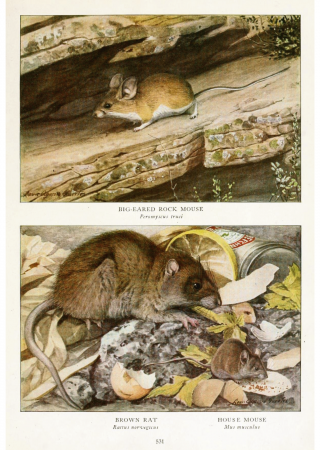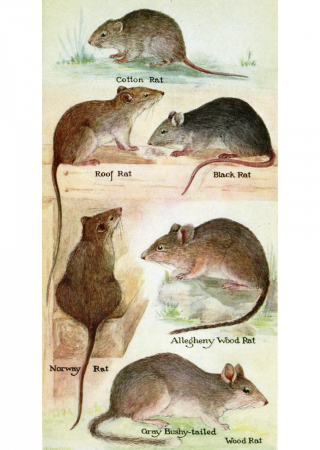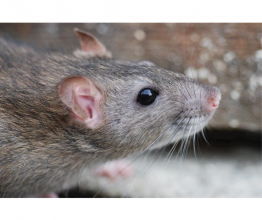Brown Rat
- …brown rats are rodents from swampy areas of eastern Asia, from which they expanded into the entire world?
- …brown rats are often confused with black rats, from which they differ in having smaller ears, shorter tails and larger bodies?
- …brown rats can consume up to one third their own body weight in food every day?
- …brown rats are intelligent rodents, which makes them difficult to trap?
- …a useful defense against brown rats is poisoned bait?
- …brown rats are often kept as laboratory animals or house pets?
Brown rats are regarded as one of the most damaging mammalian pests. They like damp areas and are mostly active at night. Like mice, brown rats are dangerous carriers of disease and parasites. These rodents are omnivorous, and consume mostly invertebrates, small vertebrates, eggs, fruit, seeds, grains and human food remains. They often gather in large packs, and can then present a danger even to larger mammals. Brown rats are excellent swimmers, climbers and jumpers. They originated in Asia, but by riding aboard ships have managed to spread almost all over the world. Early in the 19th century, they were found all over Europe. Females may bear a litter up to thirteen times per year, up to nine pups at a time. They reach sexual maturity within two to three months after birth. In captivity, brown rats can live up to three years. In the wild, where they are prey animals for many carnivores and owls, they rarely live long.




